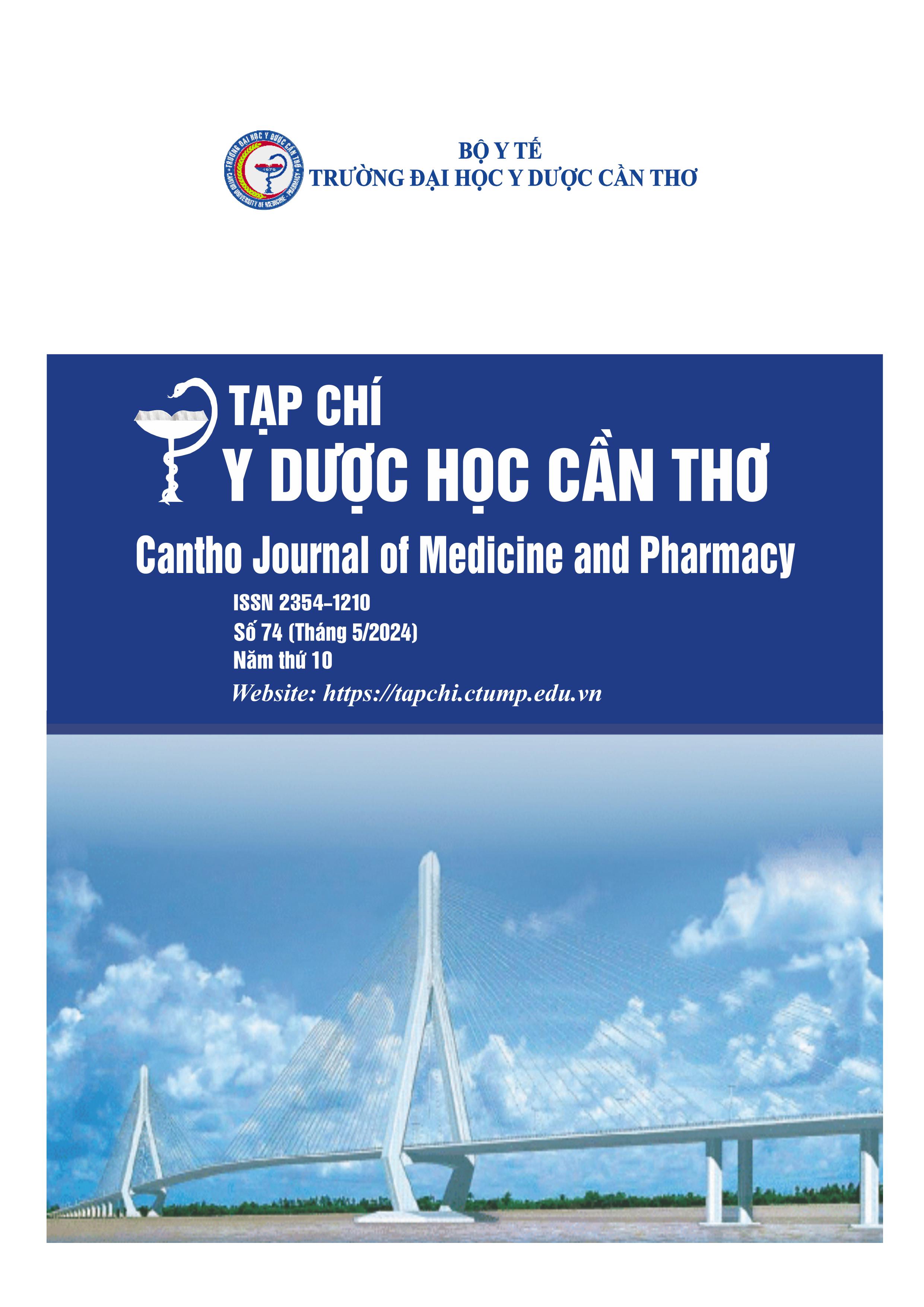STUDY ON CLINICAL FEATURES, ANXIETY LEVEL AN PREVALANCE OF DERMATOPHYTOSIS IN FACIAL CORTICOSTEROID ADDICTIVE DERMATITIS PATIENTS IN 2022-2024
Main Article Content
Abstract
Background: Facial corticosteroid addictive dermatitis (FCAD) is a severe dermatological disease. This condition damages the patient skin barrier, asscociated with the humid tropical climate in southern Vietnam, leads to create favorable enviroment for Dermatophytes to growth. Treatment FCAD requires time and effort, leads to impact patient mental health. Objectives: To describe the prevalence of anxiety disorders, the prevalence of dermatophytosis and some related factors in FCAD patients. Materials and methods: Cross-sectional descriptive study on 124 patients were diagnosed with corticosteroid-dependent dermatitis of the face at Can Tho Hospital of Dermato – Venereology and FOB International Aesthetic Skin Research Institute in 2022-2024. Results: There were 23/124 (18.5%) FCAD patients infected with Dermatophytes. The prevalence of dermatophytosis in papulopustular subtype was twice as much as erythematoedematous subtype (27.1% and 13.2%) and was more dominant in the group of patients with moderate FCAD (37.5%), followed by mild (6.9%) and finally severe (0%). The prevalance of anxiety in FCAD patients was 35.5%, of which the prevalance of anxiety in severe group was the highest (50%), followed by the moderate group (41.7%), and last was mild group. Conclusions: The prevalence of dermatophytosis in FCAD patients was 18.5%. Patients with moderate FCAD and papulopustular subtype had a higher rate of dermaphytosis than other groups. The prevalence of anxiety in FCAD patients was 35.5% and increased with disease severity.
Article Details
Keywords
Facial corticosteroid addictive dermatitis, dermatophytosis, anxiety
References
2. Zigmond A S, Snaith R P. The hospital anxiety and depression scale. Acta Psychiatr Scand. 1983. 67 (6), 361-370, doi: 10.1111/j.1600-0447.1983.tb09716.x.
3. Lukaviciute L, Ganceviciene R, Navickas P, Navickas A, et al. Anxiety, Depression, and Suicidal Ideation amongst Patients with Facial Dermatoses (Acne, Rosacea, Perioral Dermatitis, and Folliculitis) in Lithuania. Dermatology. 2020. 236 (4), 314-322, doi: 10.1159/000506627.
4. Van T C, Truc Q N, Trong H N, Van B P, et al. Anxiety and Depression According to the Hospital Aanxiety Depression Scale in Patients with Acne Vulgaris at the Ho Chi Minh City Hospital of Dermato-Venerelogy, Vietnam. Systematic Reviews in Pharmacy. 2020. 11 (2), doi:
10.5530/srp.2020.2.03.
5. Sun C, Ren Y, Zhang W. Association between skin disease and anxiety: a logistic analysis and prediction. Ann Transl Med. 2023. 11 (2), 115, doi: 10.21037/atm-22-6511.
6. Rathi S. Abuse of topical steroid as cosmetic cream: A social background of steroid dermatitis. Indian Journal of Dermatology. 2006. 51. doi: 10.4103/0019-5154.26949.
7. Lim V Z, Ho R C, Tee S I, Ho M S, et al. Anxiety and depression in patients with atopic dermatitis in a Southeast Asian tertiary dermatological centre. Ann Acad Med Singapore. 2016. 45 (10), 451-455, doi: 10.47102/annals-acadmedsg.v45n10p451.
8. Jee, Gopal S. Social Anxiety and Irrational Thought Patterns in Patients with Dermatological Problems. Indian Journal Of Clinical Psychology. 2018. 45 (1), 64-769, doi: 10.4103/00195154.105286.
9. Varshney I, Amin S S, Adil M, Mohtashim M, et al. Topical Corticosteroid Abuse–Risk Factors and Consequences. 2019. 2 (03).
10. Maheshwari V, Chaturvedi R, Meshram S, Bhalsinge R J B, et al. Evaluation of Adverse Drug Reactions caused by Topical Steroids in Patients Presenting in Dermatology Department of Teaching Institute of Tertiary Health Care Centre of Central India. 2021. 14 (2), 955-959, doi: https://dx.doi.org/10.13005/bpj/2196.


